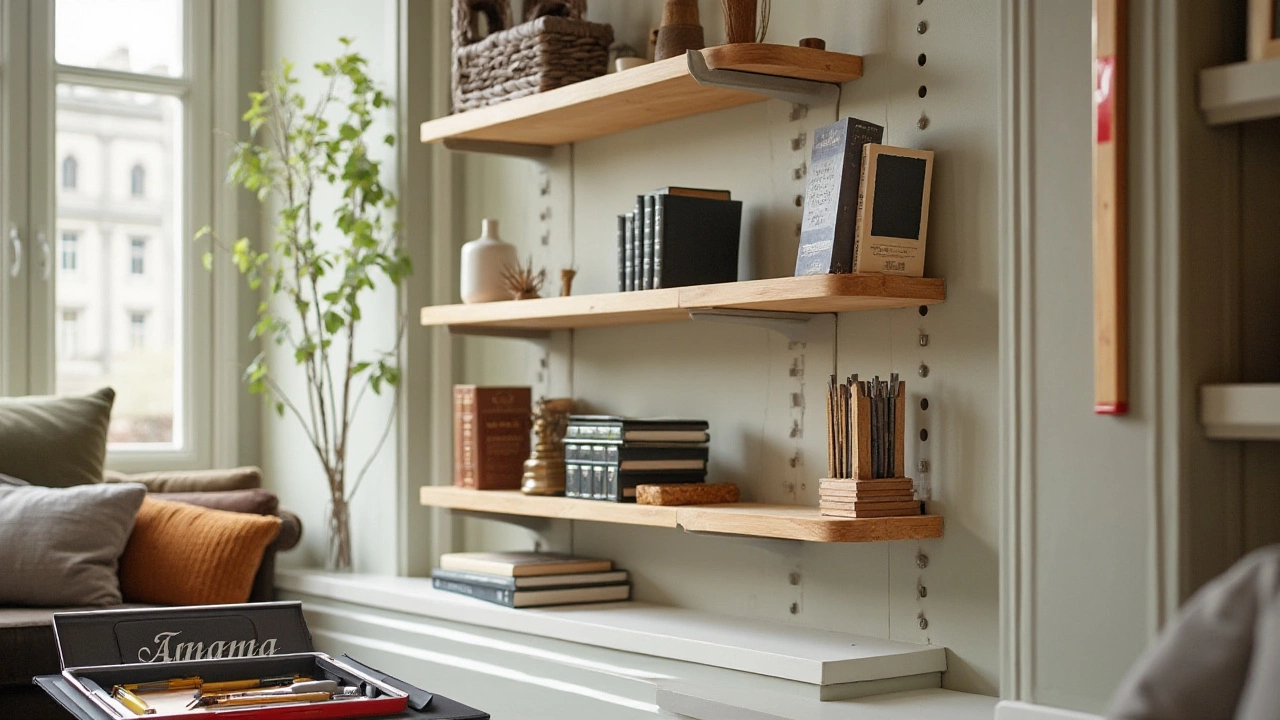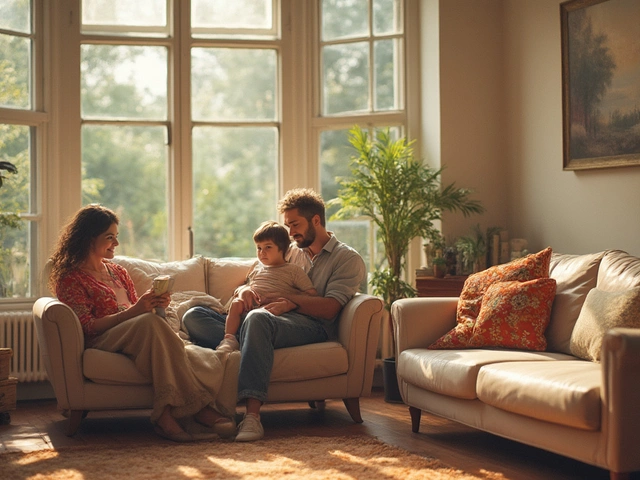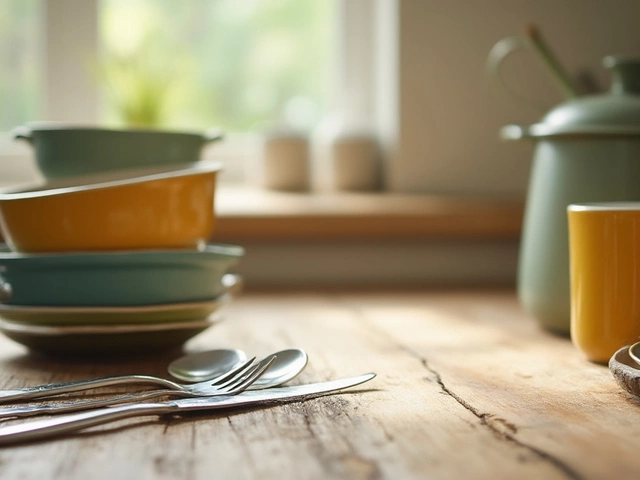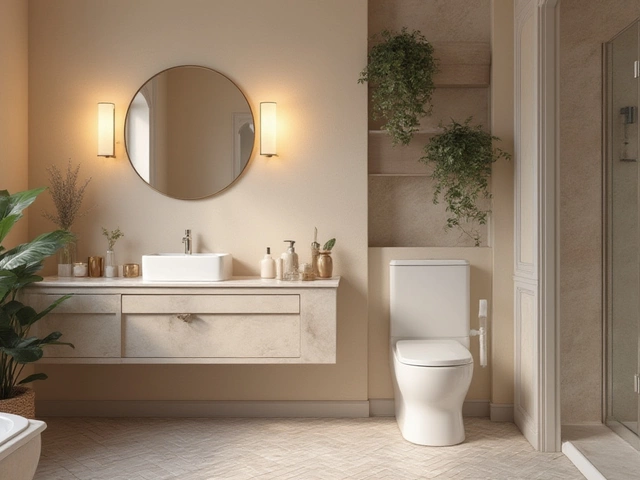Floating shelves have emerged as a modern solution for gaining storage space while maintaining a sleek, uncluttered look. These shelves, with their hidden brackets, create an illusion of floating on the wall, adding both charm and utility to any room. However, there's more to installing these elegant pieces than meets the eye.
Choosing the right materials for your shelves is the first step towards a successful installation. Each material, from wood to metal, offers its own unique aesthetic and functional benefits. Understand what will serve your space best, based on weight and style needs.
Awareness of weight limits is another critical aspect. Overloading a shelf can lead to accidents, and nobody wants their prized possessions crashing to the floor. Proper anchoring and spacing ensure that shelves can handle their intended load.
While the idea of installing floating shelves might seem simple, execution can be tricky. Precise measurement, choosing the right wall anchors, and knowing where to place them are key to a successful installation. Not only do these ensure the longevity of the shelves, but they also enhance their aesthetic appeal.
- Choosing the Right Materials
- Understanding Weight Limits
- Installation Techniques
- Design and Placement Tips
Choosing the Right Materials
When it comes to selecting the optimal materials for your floating shelves, it's crucial to strike a balance between style, strength, and cost. Each type of material brings its own set of benefits and potential challenges, making the decision more than just a choice of aesthetics. For those seeking warmth and versatility, wood remains a favorite. With options ranging from oak and pine to walnut and cherry, wooden shelves can adapt to both rustic and contemporary decor. However, it's essential to remember that the quality and density of the wood will affect the shelf's weight limit and durability. For instance, denser woods such as maple or oak are considerably stronger than lighter woods like pine, which might be better suited for less demanding applications.
On the other hand, metal offers a sleek, industrial look that can be a game-changer in modern settings. Strong yet stylish, metal shelves are known for their durability and minimalist appeal. Stainless steel or aluminum are popular choices, but they tend to be pricier than wood. Yet, the investment often pays off in urban lofts or contemporary designs where the shelves add a sophisticated touch. Contrary to wood, metal shelves won’t warp or crack over time, maintaining their structure through years of use. Interestingly, metal shelves can also support more weight, making them suitable for heavy objects. According to a report by Design Interiors Journal, “Metal shelving units are increasingly favored in minimalist designs for their remarkable balance of form and function.”
Glass shelves, though not as common, provide a chic and eclectic feel. These are fantastic for showcasing decorative items due to their transparency and ability to blend with other furniture pieces. However, they require careful consideration regarding their load capacity. Tempered glass is advisable as it is more robust than standard glass, but caution is still necessary when it comes to weight and positioning. It's worth noting that glass shelves can complement color schemes without overwhelming the room with their presence, but they come with the caveat of frequent cleaning to maintain their allure.
Lastly, engineered wood, like MDF (Medium Density Fiberboard), is an affordable and increasingly popular alternative. Though not as sturdy as natural wood, MDF can be finished with veneers to mimic more expensive materials, offering an excellent balance of cost-effectiveness and visual appeal. MDF shelves are often lighter, making them easier to install but should be used for lighter loads. According to industry trends, over the past decade, MDF has gained considerable traction in home furniture design due to its adaptability in creating diverse finishes and surface colors at a relatively low cost.
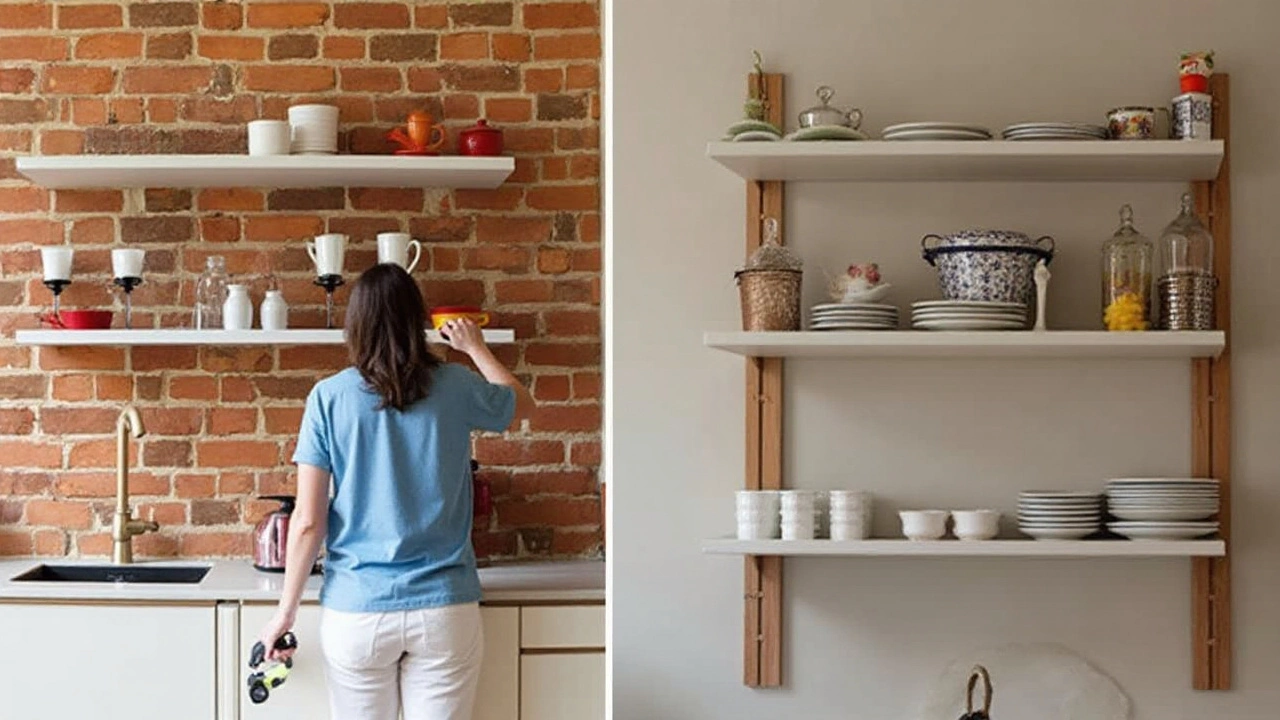
Understanding Weight Limits
When it comes to installing floating shelves, understanding weight limits is vital. Not only does it prevent mishaps but also ensures that your shelving provides lasting utility. Each shelf is designed with a specific load capacity in mind, depending largely on the materials used and the type of wall anchors employed. Most standard floating shelves, particularly those made of wood or medium-density fiberboard (MDF), can hold about 15 to 30 pounds evenly distributed. However, if they're reinforced with heavy-duty brackets, this capacity could increase significantly, allowing them to support up to 70 pounds or more.
Before hanging your shelving unit, assess what you intend to store. A common mistake many make is overlooking the weight of the shelf itself in its load capacity. The best practice is to factor in both the shelf's weight and the items you plan to display. For example, decorative items, like vases or books, can quickly add up, making it important to weigh them to avoid exceeding the limit. A rule of thumb many professionals offer, when in doubt, is to aim for half the suggested weight capacity. This provides a buffer, ensuring safety and preserving the wall's integrity.
"Properly considering the weight limits of your floating shelves is as essential to home design as the choice of paint color," remarks Emily Henderson, a respected interior designer known for her practical approach to modern design.
Choosing the right wall anchor also plays a crucial role. Drywall alone won't provide the necessary support for floating shelves. Instead, invest in toggles or other secure fasteners suitable for your wall type. Additionally, consider the placement of studs when installing shelves, especially for heavier loads. The stud structure in your walls is much more capable of supporting weight than drywall alone. Using a stud finder can help identify the best spots for installation, potentially doubling the weight your shelf is able to hold safely.
Beyond stability, keeping your floating shelves within their weight limit is also beneficial for aesthetics. Shelves that bow or bend under too much weight detract from the sleek appearance typically associated with floating designs. A shelf should maintain its posture, elegantly displaying items while appearing as though it is, in fact, floating. Planning ahead by selecting the appropriate materials, anchoring methods, and considering the weight of displayed items ensures your shelves remain a beautiful, functional addition to your home.
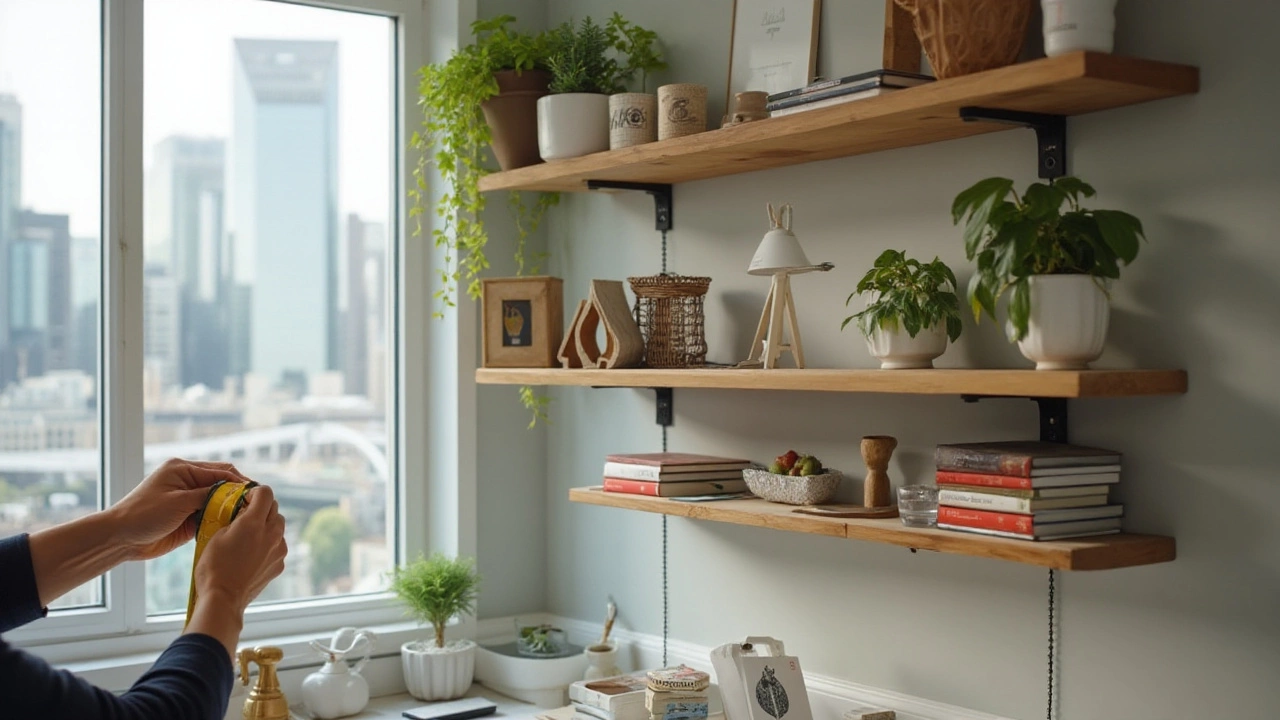
Installation Techniques
Installing floating shelves might seem like a simple task at first glance, but it involves more than just hammering a few nails into the wall. The key to a successful installation is precision and understanding the type of wall you're dealing with. Whether it's drywall, plaster, or concrete, each requires its own unique approach to ensure the shelf is safely secured and can support the intended weight. Start by gathering all necessary tools, which typically includes a level, drill, wall anchors, screws, and a stud finder. Having everything ready before you begin will save time and avoid frustration.
Firstly, use the stud finder to locate studs in the wall. Shelves hung from studs provide extra support, which is especially crucial if you plan to place heavier items like books or electronics on them. Mark the position of each stud with a pencil and use a level to ensure your markings are even. If studs are not available where your design needs them, consider using strong wall anchors that can hold substantial weight, part of the shelving tips most experts recommend.
An important step is to pre-drill holes for the brackets. This underpins the structure, by preventing the wood from splitting and ensuring the screws will hold tightly. If mounting on drywall, it's crucial to use drywall anchors, which expand as the screw is inserted, creating a secure fit. For installation on concrete walls, masonry anchors are the best choice, provided they're installed with a hammer drill to create the holes.
Once the brackets are securely attached, it's time to mount your shelf. Slide the floating shelf onto the brackets, ensuring it's flush against the wall and leveled. It's important to double-check that all elements are tight and secure before placing any items. This step cannot be overlooked. Ensuring everything is well-fitted will prevent disasters that could arise from shelves loosening over time due to regular use.
A design and placement tip worth considering is integrating your shelves in creative layouts or using multiple shelves at staggered heights for visual interest. When needed, seek advice from specialists for complex installations. Author and interior designer Bob Vila advises, "Floating shelves aren't just for practical storage—they can be a striking visual element. Using geometry and symmetry in their placement can transform an ordinary wall into a stylish display."
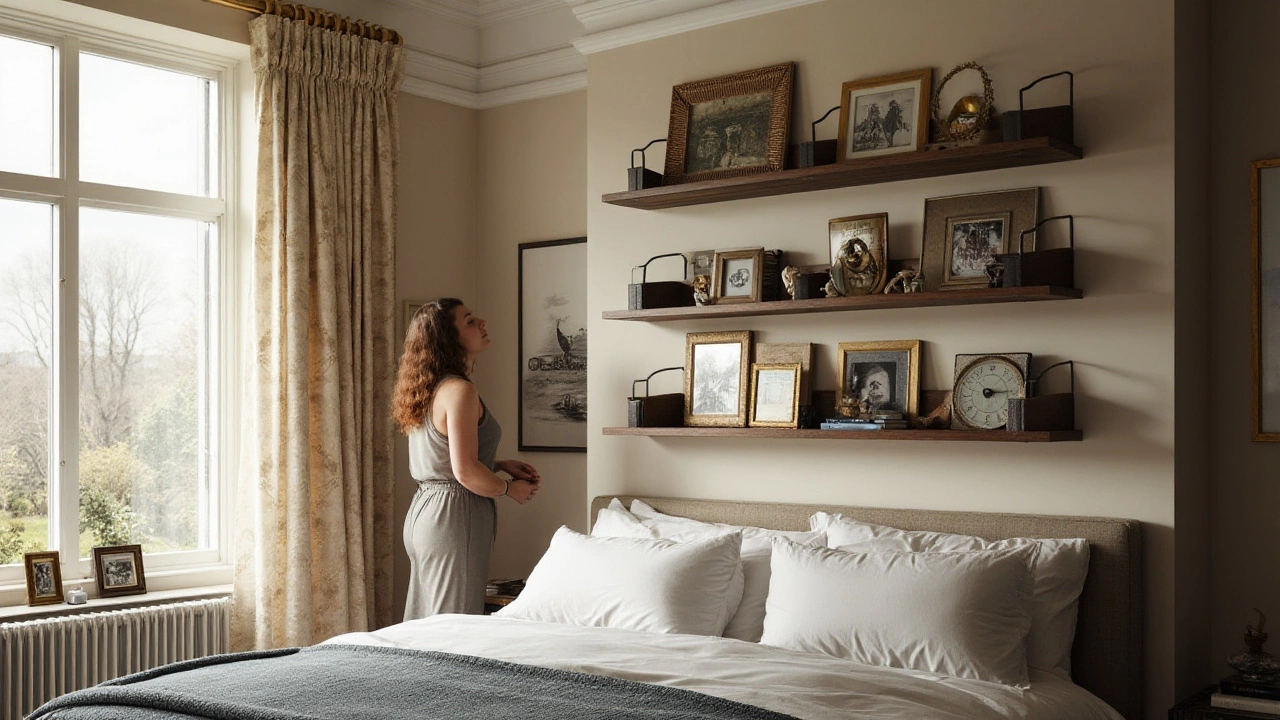
Design and Placement Tips
When it comes to installing floating shelves, design and placement are two crucial factors that can truly enhance the entire look of a room. Before jumping into the first idea that pops into mind, it’s important to consider how shelves will interact with the rest of the space. Many people find that aligning the shelves with existing structures in the room, like windows or furniture tops, creates a more cohesive and organized appearance. Alternatively, off-setting them can add interest and help break up monotony. It’s all about understanding the room’s geometry and what effect you want to create. Consider the height at which you install these shelves. Eye-level placement tends to be ideal for both functionality and aesthetic appeal, making it easier to access and appreciate the items displayed.
Beyond the alignment and height considerations, the choice of what you place on your shelves matters significantly. While they provide a perfect opportunity to showcase favorite decorations, books, or artwork, it’s important not to overcrowd. Leaving some negative space can actually emphasize each item more effectively. This approach also allows floating shelves to stay within their weight limits, thus ensuring their longevity. Reflect on the color scheme, too. A bookshelf with varied heights and colorful book spines can add a burst of personality and contrast. Conversely, a shelf with monochrome decorations can offer a sleek, modern look.
Another aspect worth considering is functionality versus decoration. While floating shelves are often installed for their stylish appeal, don’t overlook their practicality. In kitchens, consider adding these shelves over countertops to hold spices and cooking utensils. In living rooms, they can serve as the perfect home for potted plants or electronic gadgets. By combining style with utility, the overall value of your home design increases considerably. If you are looking to create a more dynamic space, try playing with different styles of floating shelves—some with straight lines and angles, others that are more curvaceous and fluid—to fit the personality of the room.
Finally, lighting can dramatically alter the effect of your shelves. Properly positioned, light can add depth and dimension, turning a simple shelf into a striking feature wall. LED strip lighting is a popular choice, adding a touch of modern sophistication. According to interior design expert Jamie Bush, "Lighting is not just functional; it’s a magic wand that transforms and elevates space." This holds especially true for floating shelves, which can be brought to life with the right illumination, becoming not just a storage solution but a featured centerpiece of any room.

